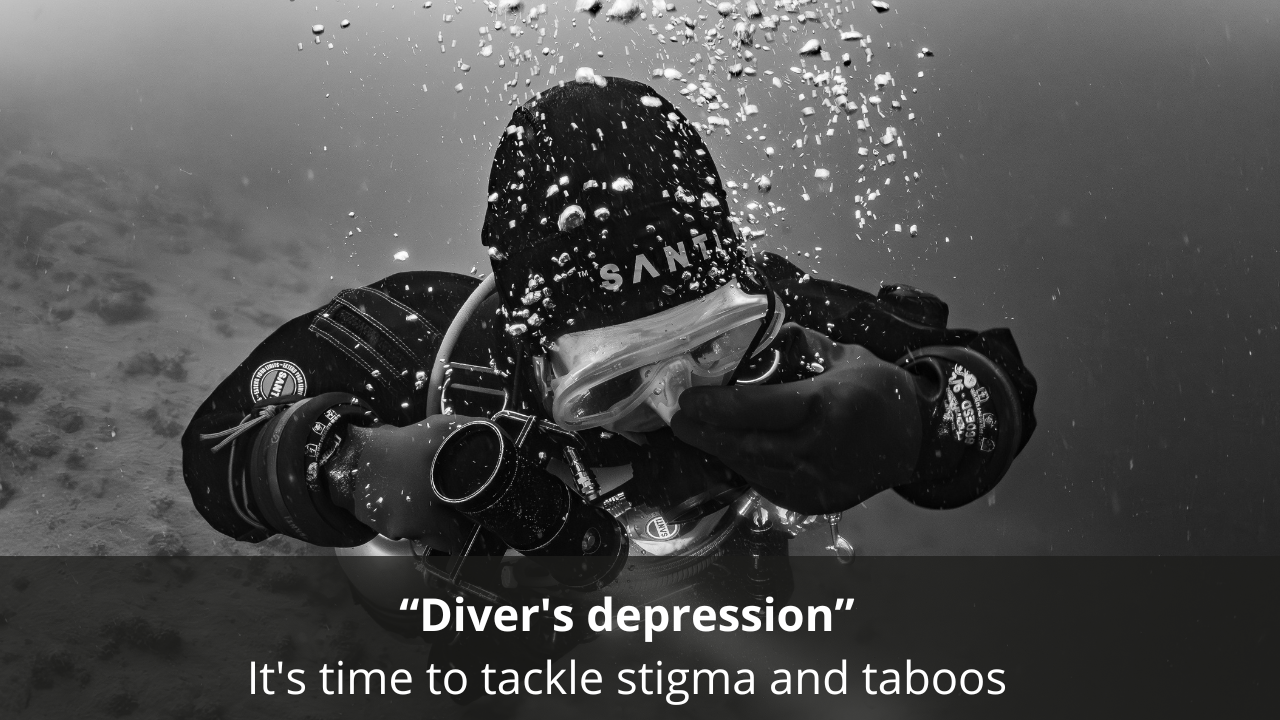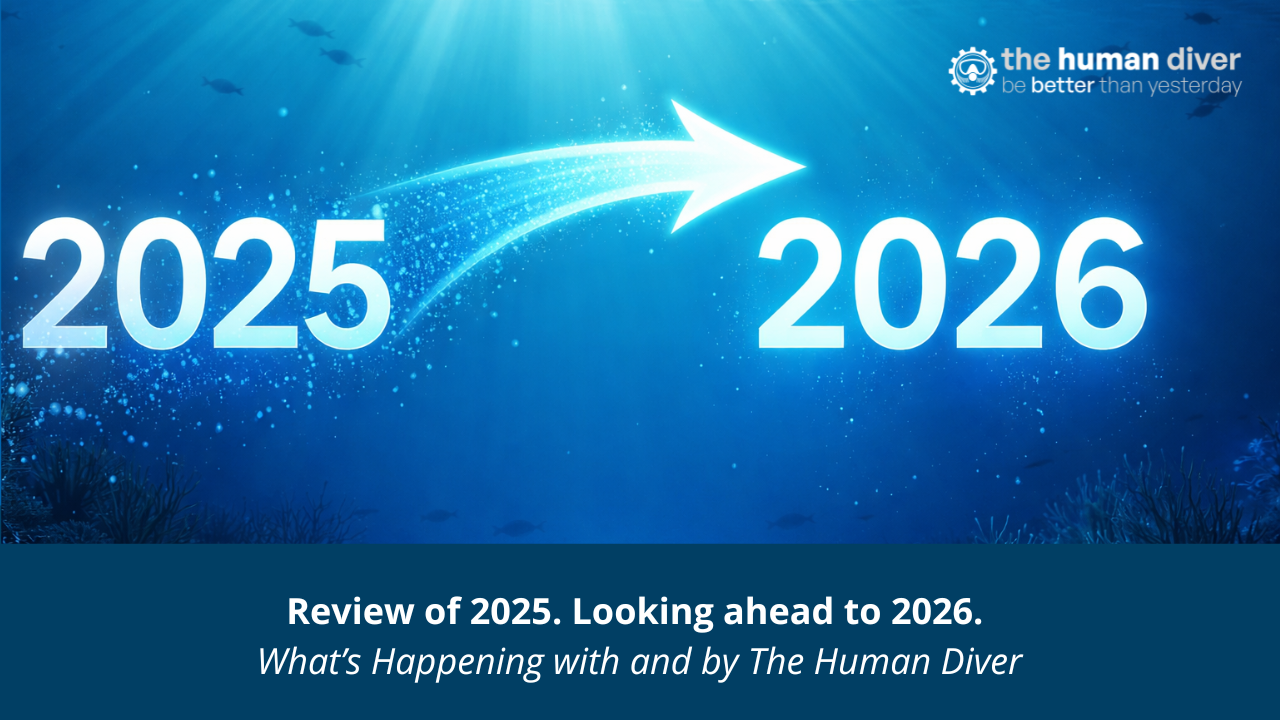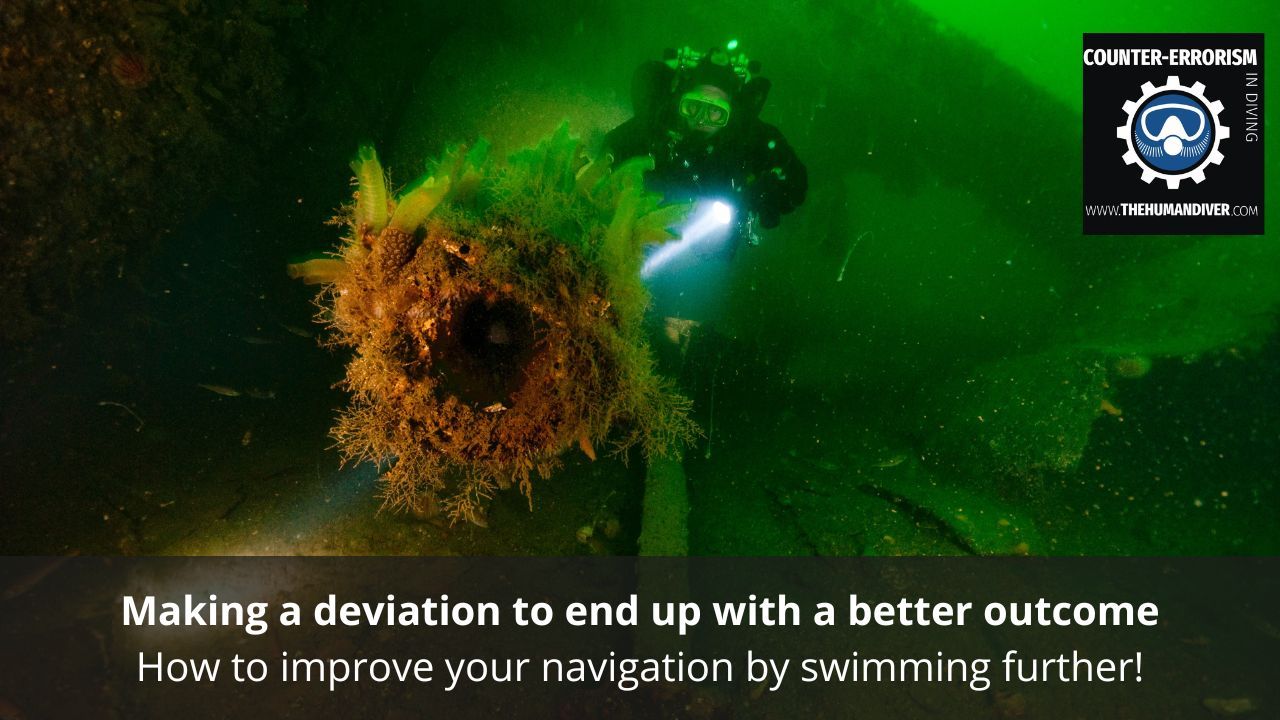
Making a deviation to end up with a better outcome
Feb 05, 2023Three teams of divers have been tasked to find a wreck. They have been dropped off on the edge of one reef and told that the wreck is on a specific bearing from the drop-off point. Unfortunately, the boat can’t get closer to the wreck, and they have a wide rocky, seaweed-covered expanse to cross until they hit the other reef where the wreck is. How do they do this?
This problem is solved with a mixture of decision-making and situation awareness. Situation awareness is based on understanding the current situation, matching it against previous experiences and patterns, and projecting these ideas into the future to make an educated guess about what might happen next.
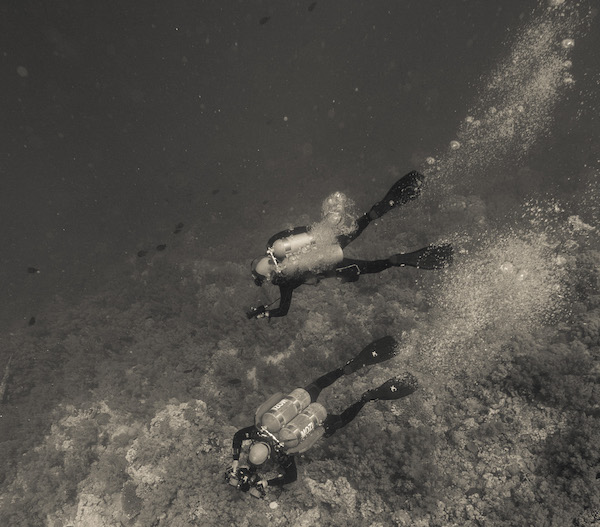
In this context, the divers cannot see where the wreck is, but they have been given a bearing to follow on their compasses and they have done their navigation training as part of earlier diver training.
What problems can you foresee?
The more experienced you are, the more problems you can think of. If you are reading this as a novice diver with limited open-water experience, then you are likely to think of only a couple of issues.
The biggest problem is the inability of the divers to maintain a constant bearing as they transit the wide expanse. To complicate things, there was a passing comment that there can be a variable current in the area.
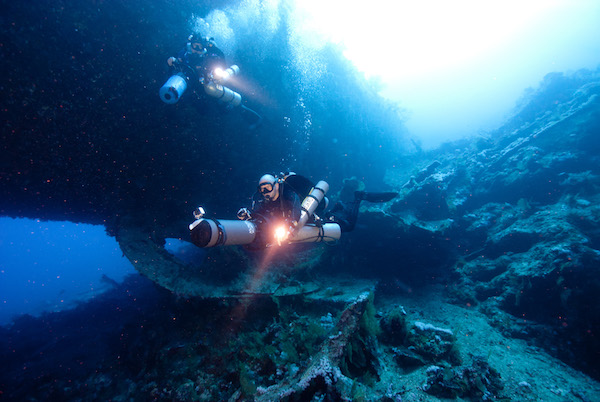
The teams are made up of two sets of two inexperienced divers and an experienced pair. The tracks they follow across the bottom are different.
- Dive team 1 take a direct track between the drop-off point and the wreck. The problem is maintaining an accurate track across the reef bed, and they have a certain probability of hitting the wreck on the other side. This probability is not known. If they hit the reef, do they know which way to turn if they can’t find the wreck on arrival at the reef?
- Dive team 2 start with the same process as the first team, but they encounter some current and they spend a few minutes on their original bearing before they realise that they’ve been drifting down current. They hit the reef but they don’t know where the wreck is, left or right.
- Dive team 3, the experienced divers, know that the chances of hitting the wreck are slim if they follow a fixed bearing, plus there is a chance of being blown off their track. What they do is make an intentional deviation from their planned track by heading off by a significant amount, which means that they know when they hit the reef at the far end, they know to turn right and will follow this. This decision might appear to be flawed because it takes a longer route and more time, but it increases the chance of finding the wreck which is the secondary goal (ascending safely without running out of gas is the primary goal!).
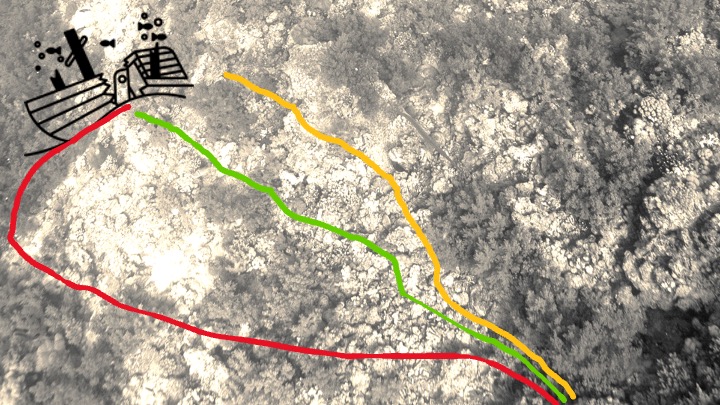
Situation awareness is about collecting data in the here-and-now, and then making sense of it, to choose the ‘best’ decision possible. You can only make sense of something if you’ve got something, a pattern, to match against. This is why experience is so important. As we get more experienced, we collect more patterns against which we can match our sensed information, leading to a more accurate decision.
A slightly different form of ‘aiming off’ is having ‘back-stops’. For example, you might be swimming along a wreck, looking for a break to enter and explore inside. The visibility isn’t great and so you can’t see too far. However, you do know that if you get to a large gun placement, you have gone past where you can enter the wreck. The gun is easier to find than the break, so you move from large, to small. This might appear to be ‘common sense’ for experienced divers (or those who have done hill walking / orienteering), but that is because you have a mental model which explains how to solve this sort of problem.
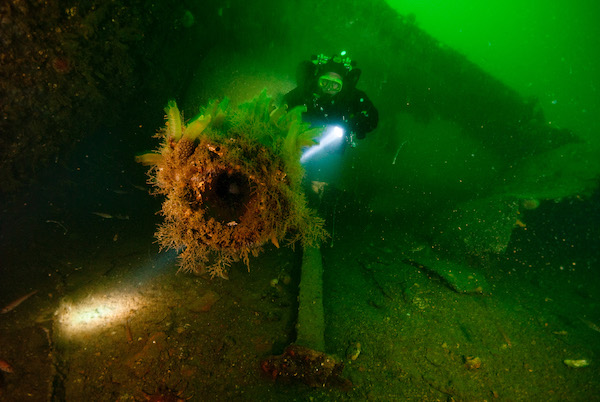
While one team might understand how to solve this problem, a post-dive debrief can help others on the dive understand how they solved the problem. How did it make sense for them to do what they did?
Summary
Human factors and non-technical skills are applicable in all aspects of diving. This short example shows how intentionally making a decision that uses more resources (and so economically a 'flawed' decision) is actually a smarter way of doing something. In this case, understanding the context, and the potential for error, led the experienced divers to aim off. The article also shows the interdependence between technical skills, context (environment), luck (current?) and non-technical skills. SA does not exist in isolation, it is absolutely linked to the environment and task at hand.
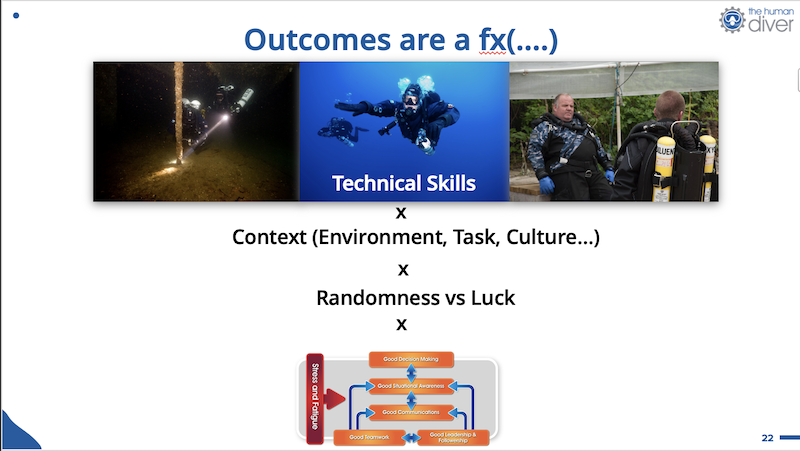
Thanks to John Flach for the inspiration for this week's blog. His blog is a great resource for those who want to dig deeper into HF, Systems Thinking and Cognitive Systems Engineering.

Gareth Lock is the owner of The Human Diver, a niche company focused on educating and developing divers, instructors and related teams to be high-performing. If you'd like to deepen your diving experience, consider taking the online introduction course which will change your attitude towards diving because safety is your perception, visit the website.
Want to learn more about this article or have questions? Contact us.

